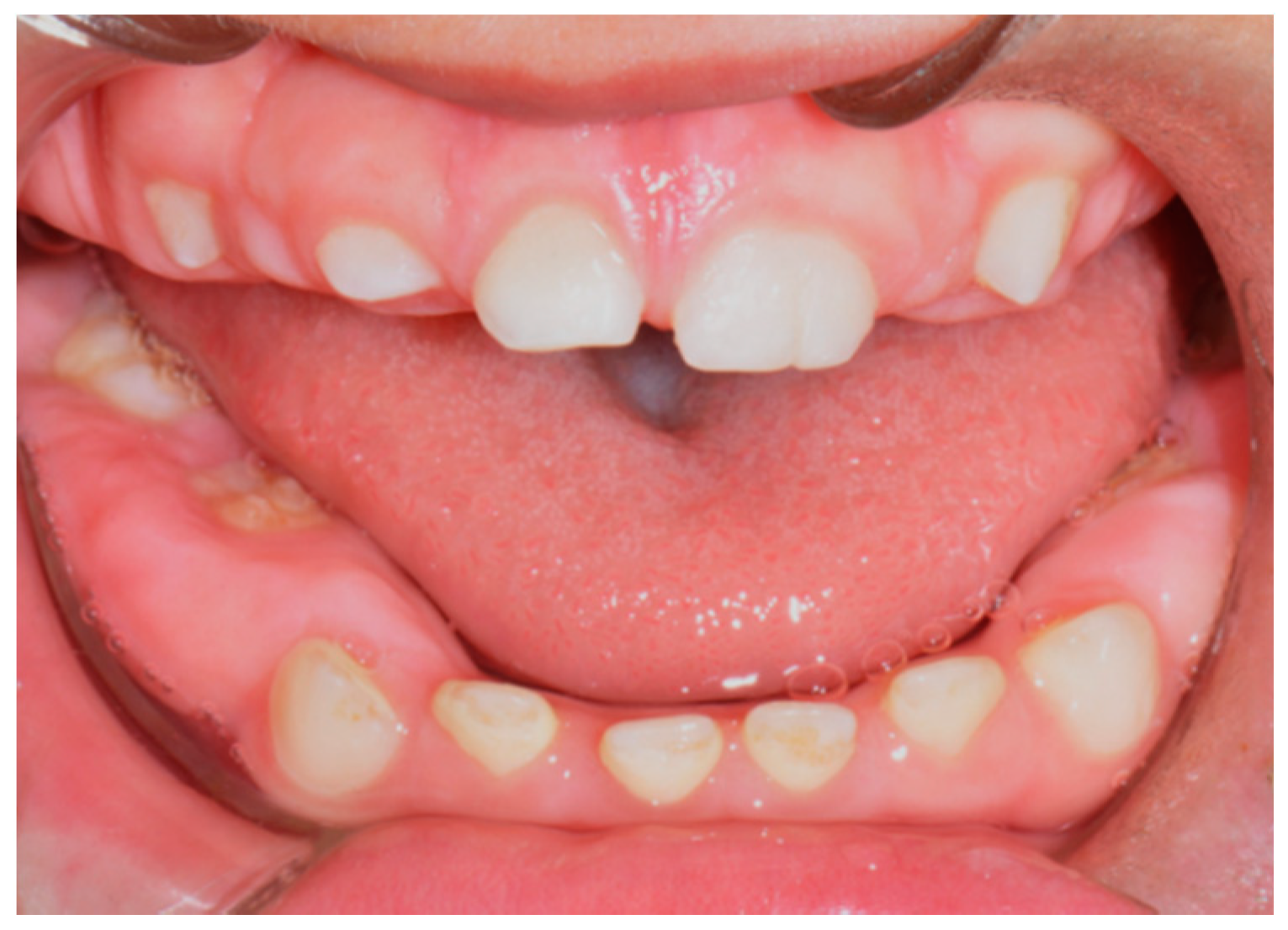
The pathologic manifestation of gingival fibromatosis comprises excessive accumulation of extracellular matrix proteins, of which collagen type I is the most prominent example. Hereditary gingival fibromatosis can occur as an isolated condition or as part of a genetic syndrome. Hereditary, drug-induced, and idiopathic gingival overgrowth have been reported. In severe cases, the excess tissue may cover the crowns of the teeth, thus causing functional, esthetic, and periodontal problems, such as bone loss and bleeding, due to the presence of pseudopockets and plaque accumulation. Gingival fibromatosis is a rare and heterogeneous group of disorders that develop as slowly progressive, local or diffuse enlargements within marginal and attached gingiva or interdental papilla. During the follow-up visit after one year, there was a noticeable clinical change in the overall health of his gingiva. In addition, he controlled his blood sugar level with diet and exercise. During the follow-up visit, he continued with this adjunctive use of the gel along with the nonsurgical periodontal therapy. Therefore, Klirich gel containing hyaluronic acid was applied on the surface of the gingiva during the first visit of the patient. On examination, there was a localized papillary gingival enlargement. The patient was not under any medication for his diabetes control. He complained of gum enlargement and frequent bleeding during brushing. A patient aged 64 years with type 2 diabetes mellitus reported to the Department of Periodontology. The present case report assessed the therapeutic benefit of adjunctive use of a commercially available topical agent containing 1% hyaluronic acid gel combined with nonsurgical periodontal therapy. Hence, the treatment of this inflammatory gingival disease is primarily focused on eliminating the cause.

The reason for the destruction of the attachment apparatus in patients with periodontal disease is the supra- and the subgingival microflora. In conclusion, the exchange of specialists’ competencies and the multidisciplinary management of these patients, are crucial to reach diagnosis and the correct clinical-therapeutic management.

This narrative review shows that through rigid, strict diagnostic protocols, the work of the clinician is greatly facilitated, despite the wide variety of pathologies considered. However, thanks to scientific sharing and the availability of genetic panels it is possible to obtain an accurate phenotypic identification of well-known syndromes and also to identify new ones. Gingival overgrowth can be related to syndromic diseases including a wide spectrum of genetic and chromosomal alterations. In addition, we highlighted the diagnostic pathway that should be employed in patients affected by gingival overgrowth. The aim of this review is to highlight the most recent updates and classifications of all the existent gingival overgrowths. Non-plaque induced diffuse gingival overgrowth represents a broad class of conditions caused by several etiological factors.


 0 kommentar(er)
0 kommentar(er)
